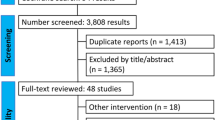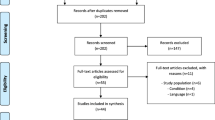Abstract
Introduction and hypothesis
Surgical treatment of pelvic organ prolapse often includes the use of patients’ vaginal connective tissue. Wound healing appears to play an important part in the success of such procedures. The aim of this study was to describe the effect of age on inflammatory processes, specifically macrophage response, involved in vaginal wound healing.
Methods
Twenty-five young (12 weeks old) and 25 old (12 months old) virgin female Fischer rats underwent a standardized 9-mm posterior midline vaginal incision. Tissue samples were taken for histological analysis on days 1, 3, 7, 14 and 30 post-injury. Parameters evaluated included wound area, macrophage number and expression of inflammatory markers including tumor necrosis factor alpha (TNFa), inducible nitric oxide synthase (iNOS), CCR7/CD197, arginase I and CD163/M130.
Results
Microscopic examination of the vaginal wounds over time demonstrated a clear difference between young and old rats in spontaneous healing capacity. The average wound area in young rats 1 day after injury was significantly smaller than in old rats (16.5 ± 1.7 vs. 23.8 ± 1.5 mm2, P < 0.05). At 3 days post-injury, wounds were closed in young rats but still open in old rats (wound area: 13.5 ± 1.5 mm2). Old rats demonstrated a more excessive and sustained macrophage response compared with young rats. They also demonstrated a disordered pattern of macrophage expression over time, with a prolonged expression of TNFa and iNOS in the tissue and a disordered M2 macrophage response.
Conclusion
Excessive and prolonged macrophage response in older rats may contribute to poor wound healing in the vagina.




Similar content being viewed by others
References
Freeman RM. Do we really know the outcomes of prolapse surgery? Maturitas. 2010;65:11–4.
Deng T, Liao B, Luo D, Shen H, Wang K. Risk factors for mesh erosion after female pelvic floor reconstructive surgery: a systematic review and meta-analysis. BJU Int. 2016;117(2):323–43.
Rajshekhar S, Mukhopadhyay S, Klinge U. Mesh for prolapse surgery: why the fuss? Post Reprod Health. 2015;21(2):69–74.
DeLancey JO, Morgan DM, Fenner DE, et al. Comparison of levator ani muscle defects and function in women with and without pelvic organ prolapse. Obstet Gynecol. 2007;109:295–302.
Chow D, Rodríguez LV. Epidemiology and prevalence of pelvic organ prolapse. Curr Opin Urol. 2013;23(4):293–8.
Mannella P, Palla G, Bellini M, Simoncini T. The female pelvic floor through midlife and aging. Maturitas. 2013;76:230–4.
Rortveit G, Hunskaar S. Urinary incontinence and age at the first and last delivery: the Norwegian HUNT/EPINCONT study. Am J Obstet Gynecol. 2006;195:433–8.
Dang C, Ting K, Soo C, Longaker MT, Lorenz HP. Foetal wound healing. Curr Perspect Clin Plast Surg. 2003;30:13–33.
Guo S, DiPietro LA. Factors affecting wound healing. J Dent Res. 2010;89:219–29.
Boon L, Manicourt D, Marbaix E, Vandenabeele M, Vanwijck R. A comparative analysis of healing of surgical cleft lip corrected in utero and in neonates. Plast Reconstr Surg. 1992;89:11–7.
Shveiky D, Iglesia CB, Onozato ML, Das S, Ji H, Sandberg K. Age has detrimental effects on vaginal wound healing in the rat. Gender Medicine. 2010;7(5):506.
Shveiky D, Iglesia CB, Das SS, Ben-Menachem-Zidon O, Chill HH, Ji H, Sandberg K. Age-associated impairments in tissue strength and immune response in a rat vaginal injury model. Int Urogynecol J. 2019.
Murray PJ. Macrophage polarization. Annu Rev Physiol. 2017;79:541–66.
Tarique AA, Logan J, Thomas E, Holt PG, Sly PD, Fantino E. Phenotypic, functional, and plasticity features of classical and alternatively activated human macrophages. Am J Respir Cell Mol Biol. 2015;53:676–88.
Hai-xia J, Yu-lian Z, Jing-jing D, et al. The synthetic melanocortin (CKPV)2 exerts anti-fungal, and anti-inflammatory effects against Candida albicans vaginitis via inducing macrophage M2 polarization. PLoS One. 2013;8:1–11.
Ferrante CJ, Leibovitch SJ. Regulation of macrophage polarization and wound healing. Adv Wound Care (New Rochelle). 2012;1(1):10–6.
Mahbub S, Deburghgraeve CR, Kovacs EJ. Advanced age impairs macrophage polarization. J Interf Cytokine Res. 2012;32(1):18–26.
Campbell L, Saville CR, Murray PJ, Cruickshank SM, Hardman MJ. Local arginase 1 activity is required for cutaneous wound healing. J Invest Derm. 2013;133(10):2461–70.
Stranks AJ, Hansen AL, Panse I, et al. Autophagy controls acquisition of aging features in macrophages. J Innate Immun. 2015;7:375–91.
Oishi Y, Manabe I. Macrophages in age-related chronic inflammatory diseases. NPJ Aging Mech Dis. 2016;2:16018.
Linehan E, Fitzgerald DC. Ageing and the immune system: focus on macrophages. Eur J Microbiol Immun. 2015;5(1):14–24.
MacLeod AS, Mansbridge JN. The innate immune system in acute and chronic wounds. Adv Wound Care (New Rochelle). 2016;5(2):65–78.
Ashcroft GS, Mills SG. Androgen receptor-mediated inhibition of cutaneous wound healing. J Clin Invest. 2002;110(5):615–24.
Ashcroft GS, Jeong MJ, Ashworth JJ, et al. Tumor necrosis factor-alpha (TNFa) is a therapeutic target for impaired cutaneous wound healing. Wound Repair Regen. 2012;20(1):38–49.
Huang SM, Wu CS, Chiu MH, et al. High glucose environment induces M1 macrophage polarization that impairs keratinocyte migration via TNFa: an important mechanism to delay the diabetic wound healing. J Dermatol Sci. 2019;96(3):159–67.
Leonardi CL, Powers JL, Matheson RT, et al. Etanercept as monotherapy in patients with psoriasis. N Engl J Med. 2003;349(21):2014–22.
Menegatti S, Bianchi E, Rogge L. Anti-TNF therapy in spondyloarthritis and related diseases, impact on the immune system and prediction of treatment responses. Front Immunol. 2019;10:382.
Adegbola SO, Sahnan K, Warusavitarne J, Hart A, Tozer P. Anti-TNF therapy in Crohn's disease. Int J Mol Sci. 2018;19(8)
Author information
Authors and Affiliations
Contributions
Ben Menachem-Zidon: Project development, data collection, data analysis, manuscript writing and editing.
Parkes: Project development, data analysis, manuscript writing and editing.
Chill: Data analysis, manuscript writing and editing.
Reubinoff: Project management, manuscript editing.
Sandberg: Project development, manuscript editing.
Ji: Data collection, project management.
Shveiky: Project development, data management, data analysis, manuscript writing and editing.
Corresponding author
Ethics declarations
Conflict of interest
The authors have no conflict of interest to report.
Financial support
None.
Additional information
Publisher’s note
Springer Nature remains neutral with regard to jurisdictional claims in published maps and institutional affiliations.
Rights and permissions
About this article
Cite this article
Ben Menachem-Zidon, O., Parkes, I., Chill, H.H. et al. Age-associated differences in macrophage response in a vaginal wound healing rat model. Int Urogynecol J 31, 1803–1809 (2020). https://doi.org/10.1007/s00192-020-04266-9
Received:
Accepted:
Published:
Issue Date:
DOI: https://doi.org/10.1007/s00192-020-04266-9




